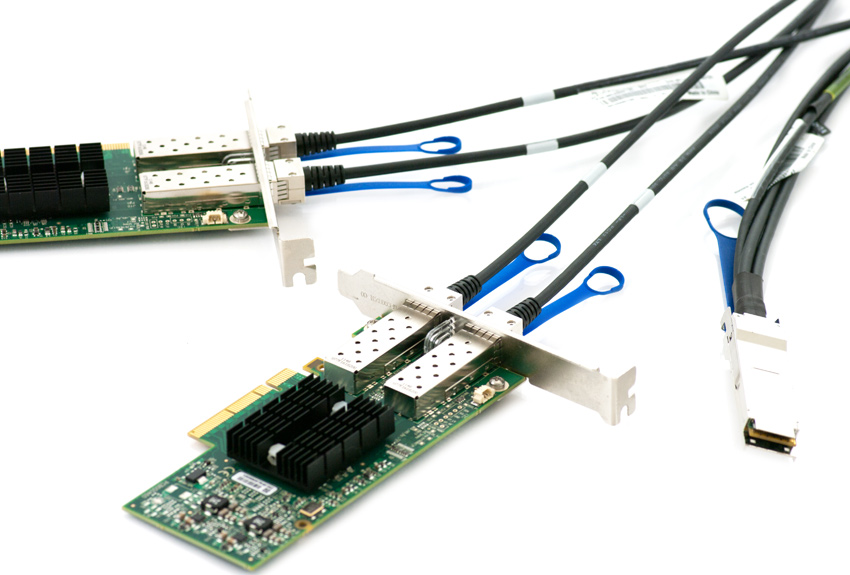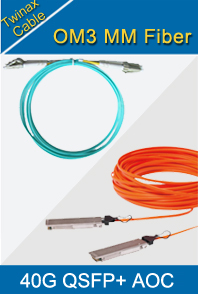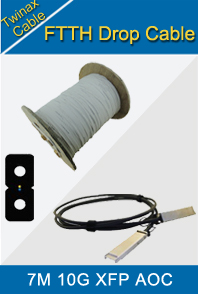-

- Sopto Home
-

- Special Topic
-

- Twinax Cable Knowledge
-

- Any to All Structured Cabling System in Data Center
Twinax Cable Knowledge
- Cable Labeling as Part of Data Center Management
- How to Correctly Run cables On Servers in a Data Center?
- 4 Realities You Should Consider 10G Ethernet for Your Business
- Is it finally the end of copper?
- Why We Need Both 40G and 100G Ethernet Cable?
- What is Twisted Pair Cable?
- Benefits of Twisted Pair Cable Construction
- Why Copper Is Used in Cables?
- A Brief Look at Ethernet Cable Construction
SOPTO Special Topic
Certificate



Guarantee
Except products belongs to Bargain Shop section, all products are warranted by SOPTO only to purchasers for resale or for use in business or original equipment manufacturer, against defects in workmanship or materials under normal use (consumables, normal tear and wear excluded) for one year after date of purchase from SOPTO, unless otherwise stated...
Return Policies
Defective products will be accepted for exchange, at our discretion, within 14 days from receipt. Buyer might be requested to return the defective products to SOPTO for verification or authorized service location, as SOPTO designated, shipping costs prepaid. .....
Applications
 Twinax Cables are mainly used with PCI or PCI-E Card for the short distance interconnection in the server room.
Twinax Cables are mainly used with PCI or PCI-E Card for the short distance interconnection in the server room.
SOPTO Products
- Fiber Optic Transceiver Module
- High Speed Cable
- Fiber Optical Cable
- Fiber Optical Patch Cords
- Splitter CWDM DWDM
- PON Solution
- FTTH Box ODF Closure
- PCI-E Network Card
- Network Cables
- Fiber Optical Adapter
- Fiber Optical Attenuator
- Fiber Media Converter
- PDH Multiplexers
- Protocol Converter
- Digital Video Multiplexer
- Fiber Optical Tools
- Compatible
Related Products
Performance Feature
Stable Transmission Speed
Reliable Transmission
Various Length Selection
Wider Operating Temperature
Good for HPC
Good for Data Center
Twinax Cable Knowledge
Recommended


Any to All Structured Cabling System in Data Center
The concept behind any-to-all is quite simple. Copper and fiber panels are installed in each cabinet which correspond to copper patch panels installed in a central patching area. All fiber is run to one section of cabinets/racks in that same central patching area. This allows any equipment to be installed and connected to any other piece of equipment via either a copper patch cord or a fiber jumper. The fixed portion of the channel remains unchanged. Pathways and spaces are planned up front to properly accommodate the cabling. While this method may require more cabling up front, it has significant advantages over the life of the data center.

Example of Any-to-All Structured Cabling
These channels are passive and carry no reoccurring maintenance costs as realized with the addition of active electronics. If planned properly, structured cabling systems will last at least 10 years, supporting 2 or 3 generations of active electronics. The additional equipment needed for a point-to-point system will require replacement/upgrade multiple times before the structured cabling system needs to be replaced. The equipment replacement costs, not including ongoing maintenance fees, will negate any up front savings from using less cabling in a point-to-point system.
The red lines (fiber connections) all arrive in the central patching area in one location. This allows any piece of equipment requiring a fiber connection to be connected to any other fiber equipment port. For instance, if a cabinet has a switch that requires a fiber connection for a SAN on day one, but needs to be changed to fiber switch connection at a later date, all that is required to connect the two ports is a fiber jumper change in the central patching area. The same is true for copper, although some data centers zone copper connections into smaller zones by function, or based on copper length and pathway requirements. As with the fiber, any copper port can be connected to any other copper port in the central patching area or within the zone.
Cabling standards are written to support 2-3 generations of active electronics. An "any-to-all" configuration assures that the fixed portion of the channels is run once and remains highly unchanged if higher performing fiber and copper cabling plants are used. As a result, there will be less contractor visits to the site for MAC work as the channels already exist. Faster deployment times for equipment will be realized as no new cabling channels have to be run. They are simply connected via a patch cord. Predefined pathways and spaces will not impact cooling airflow or become overfilled as they can be properly sized for the cabling installed. Bearing in mind that the standards recommend installation of cabling accommodating growth, not only will day-one connectivity needs be supported, but also anticipated future connectivity growth needs are already accounted for.
.png)
Point to Point Connections
With central patching, switch ports are not dedicated to cabinets that may not require them; therefore, active ports can be fully utilized as any port can be connected to any other port in the central patching area. Administration and documentation are enhanced as the patch panels are labeled (according to the standards) with the location at the opposite end of the channel. Patch cords and jumpers are easy to manage in cabinets rendering a more aesthetically pleasing appearance as cabinets will be tidier. In contrast, with point-to-point cabling, labeling is limited to a label attached to the end of a cable assembly.
With a structured high performing copper and fiber cabling infrastructure, recycling of cabling is minimized as several generations of electronics can utilize the same channels. Being able to utilize all switch ports lowers the number of switches and power supplies. All of these help contribute to green factors for a data center.
To further explain the power supply and switch port impact, contrasting the point-to -point, ToR scenario in section 1, in an "any-to-all" scenario, the 48 ports that would normally be dedicated to a single cabinet (ToR) can now be divided up, on demand, to any of several cabinets via the central patching area. Where autonomous LAN segments are required, VLANs or address segmentation can be used to block visibility to other segments.
Sopto supplies high quality twinax cables, like SFP+ cables, XFP to XFP cables, 40G QSFP+ cables, for 10G Ethernet application. For more info, please browse our website. For purchasing more fiber optic assembly products, please contact a Sopto representative by calling 86-755-36946668, or by sending an email to info@sopto.com.



